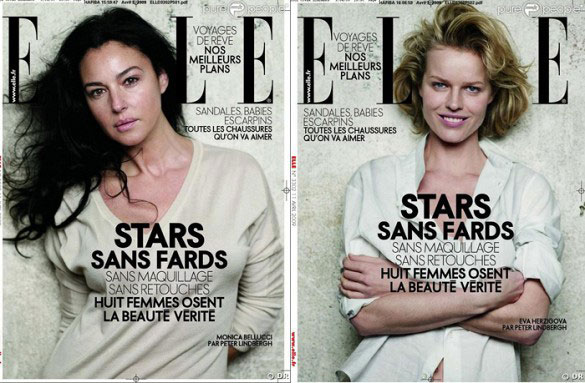Imagine a world without Adobe Photoshop? Five years ago, with Photoshop turning 20, some folks asked the exactly same question — see the video further below. The constantly evolving imaging software that continues to redefine creativity in the digital age turned 25 on February 19, 2015. It began in 1987, when a certain Thomas Knoll developed a pixel-imaging program called Display. It was a simple program to showcase grayscale images on a black-and-white monitor. However, after collaborating with his brother, John, the two began adding features that made it possible to process digital image files. The program eventually caught the attention of industry influencers, and in 1989, Adobe made the decision to license the software, naming it Photoshop and shipping the first version in 1990. Today, Adobe celebrates 25 years of Photoshop with cool 60 seconds of artistry:
It’s a company, like Google, that became a verb. Said Thomas Knoll, Adobe Fellow and Photoshop co-creator, today: “Adobe thought we’d sell about 500 copies of Photoshop a month. Not in my wildest dreams did we think creatives would embrace the product in the numbers and ways they have. It’s inspiring to see the beautiful images our customers create, the careers Photoshop has launched and the new uses people all over the world find for Photoshop every day.”
Well, that’s the one side of the coin. Especially in the fashion industry, Photoshop is less a topic up for discussion and more a straightforward fact of life. Those who work in and around the industry simply accept that most if not all of the images we’re bombarded with every day are retouched, Photoshopped and edited beyond belief — the reason being that in fashion, they are selling a fantasy. In other words: reality doesn’t sell.

Famous beautiful women have seemingly perfect bodies. This can have incredibly negative effects on girls and women of all ages by comparing a fantasy to reality. There is nothing wrong with selling a fantasy — unless you present that fantasy as an achievable or de facto reality.
In the last 25 years, Photoshop helped create a whole industry of amazing — sometimes too amazing — photographers. Where will it be in the next 25 years? We’ll breath virtual life into digital images?
Fair to say that maybe Photoshop has even taken over our visual culture. Photoshop has changed the meaning of photos entirely — and sometimes for the worst, just to mention people’s growing inability to distinguish between fantasy and reality. Amazing, unbelievable images look too too amazing to amazing to be true. They aren’t. Yet in a way, in people’s minds, they are.
Because of Photoshop there is no longer a record of what happened, even though people were altering photographs for 100 years before Photoshop came along, on the one hand to compensate for the technology. The human eye can see twice as much light as an average camera. Secondly, manipulation served to make a statement with images.
Images have not been inviolate since their inception. Blame yourself if you put too much trust in them. If they’re there, they’re real?!
In the video below, the first ever Photoshop video, you’ll see Jennifer in Paradise, the first ever image to be edited in Photoshop. It shows Thomas Knoll’s then-girlfriend and now wife, in Bora Bora, and was taken in August 1988:
In a way, Photoshop is one of the great democratizers that technology blesses us with. Not too long ago you had to e a dedicated pro and spend countless hours to get a “pro” picture. Today? The most sophisticated image-processing technologies are available in the palm of one’s hand.
Now, as promised, imagine that world without Photoshop:


